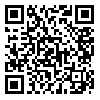Volume 7, Issue 27 (1-2008)
refahj 2008, 7(27): 115-138 |
Back to browse issues page
Download citation:
BibTeX | RIS | EndNote | Medlars | ProCite | Reference Manager | RefWorks
Send citation to:



BibTeX | RIS | EndNote | Medlars | ProCite | Reference Manager | RefWorks
Send citation to:
Khoshabi K, Habibi Asgarabadi M, Farzadfard Z, Mohamadkhani P. (2008). Investigating Prevalence of Child Abuse among Guidance School Students, Tehran, 1385-1386. refahj. 7(27), 115-138.
URL: http://refahj.uswr.ac.ir/article-1-2018-en.html
URL: http://refahj.uswr.ac.ir/article-1-2018-en.html
Abstract: (3548 Views)
Objectives: Child abuse described as each physical or mental damage, sexual abuse or neglectful behaviors toward a child that has been occurred by who is responsible for child’s rearing and welfare, in a way that child’s health and wellbeing will be in danger. There are four domains in child abuse definition: physical abuse, emotional abuse, sexual abuse and neglect. Maltreatments witch hurt make head injury, burn a child or any kind of harm witch remains for at least 48 hours are some types of physical abuse. Emotional abusive behaviors consist of depriving child from shelter, food, sleep and so forth, oral threaten, criticism, blaming, rejecting, isolating or encouraging child to behave aggressive, sexual or involve in criminal activities. Sexual abuse domain includes: any sexual interactions between child and an adult person (who is at least 5 years older than child) witch had to the child to satisfy adult person (e.g. intercourse, exhibitionism, voyeurism and incest). Neglect’s sub-domains take in to: physical neglect (such as pay no attention to child’s health, sufficient feeding and enough wearing), educational neglect (e.g. refuse of school-registration, let the child to escape from school continuously) and emotional neglect (let the child to use alcohol or substance, ignore partner/spouse’s abusive behaviors toward child). Studies found co-existence of various types of child abuse simultaneously if one of them was occurred.
Recognizing high risk families to prevent child abuse was the critical aim of large amount of investigations recently. As other multi factorial phenomena, cultural factors are playing important role in child abuse too, witch is highlighting the needs of cultural researches. The present study was conducted to examine child abuse in Iran.
Method: This study aimed at investigating prevalence of child abuse among guidance school students during 1385-1386 in Tehran. Quota sampling in this epidemiological study were based on sex, education level and area location of life variables, and 1350 students (male=785, female=745) were chosen with cluster sampling to participate in study. A pilot study (n=120) ran to estimate made up child abuse questionnaire which made by researchers to cover all domains of child abuse (physical, emotional and sexual abuse and neglect). participants were completed child abuse questionnaire. Data were analyzed using descriptive statistics and chi square.
Findings: Findings showed: a) mild physical abuse prevalence was 38.3 percent, b) severe physical abuse prevalence was 35.9 percent, c) neglect prevalence was 20.5 percent, d) emotional abuse prevalence was 62.5 percent, e) the most common abusive behaviors in mild physical abuse domain includes: throw a staff toward the child and pushing, f) the most popular abusive behavior in severe physical abuse domain was kicking the child, g) in neglect domain most common behavior was physical neglect, h) in emotional domain the frequent abusive behavior consist of yelling out at child, marital discords and ignoring the child.
Findings also showed there were significant correlations between student’s sex, area location of life, parent’s sex, parent’s education, parent’s job and parent’s divorce and child abuse prevalence.
Results: Regarding to present study’s findings and child abuse literature, authorial services must consider high level of child abuse prevalence, and pay more attention to recognize and intervene child abuse situations and finally the most important role of child health services is considering programs to prevent of child abuse consequences (such as, academic deficient, externalized behavior problems, emotional disturbances, …).
Type of Study: orginal |
Received: 2015/08/29 | Accepted: 2015/08/29 | Published: 2015/08/29
Received: 2015/08/29 | Accepted: 2015/08/29 | Published: 2015/08/29
Send email to the article author
| Rights and permissions | |
 |
This work is licensed under a Creative Commons Attribution-NonCommercial 4.0 International License. |





